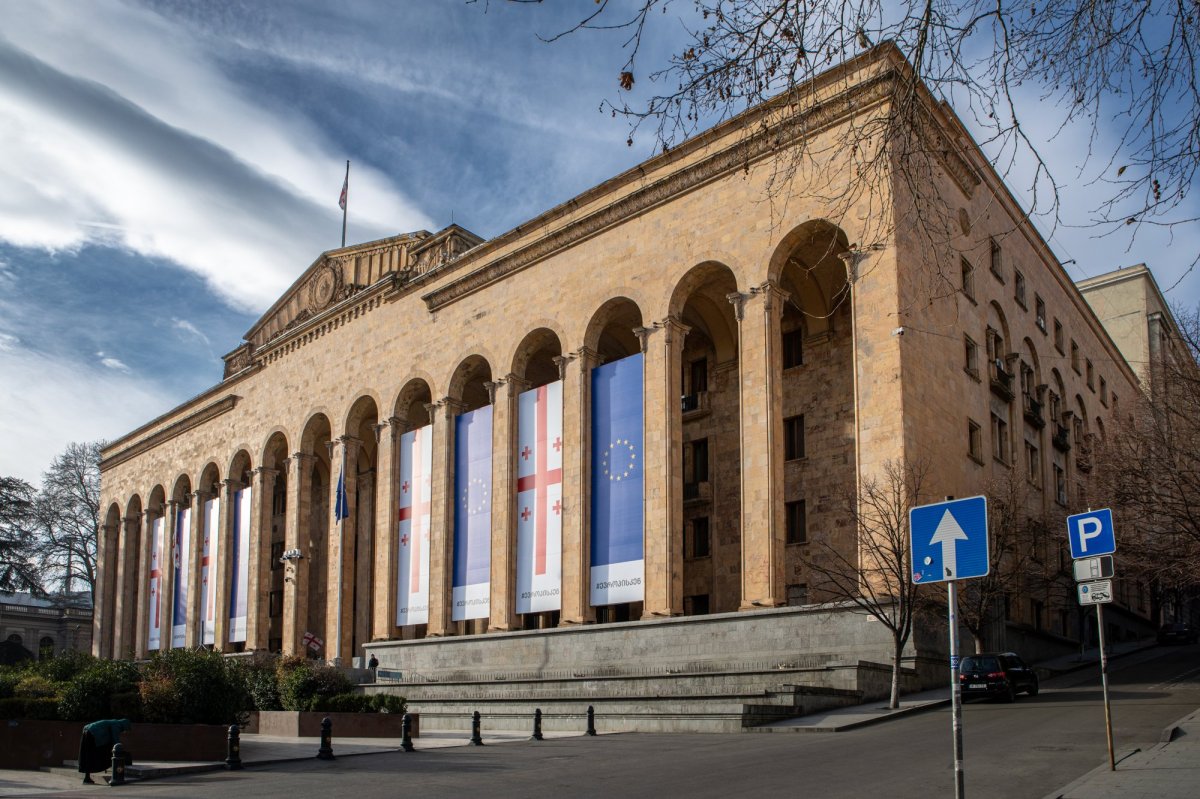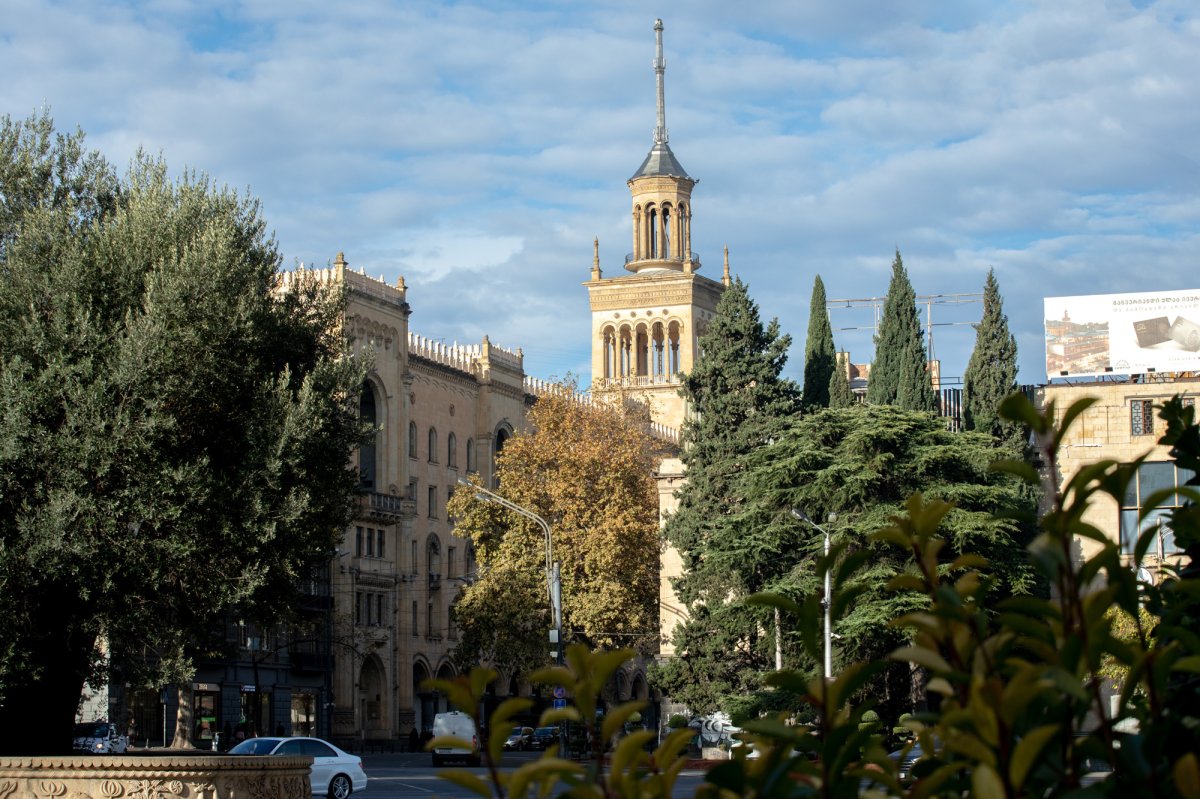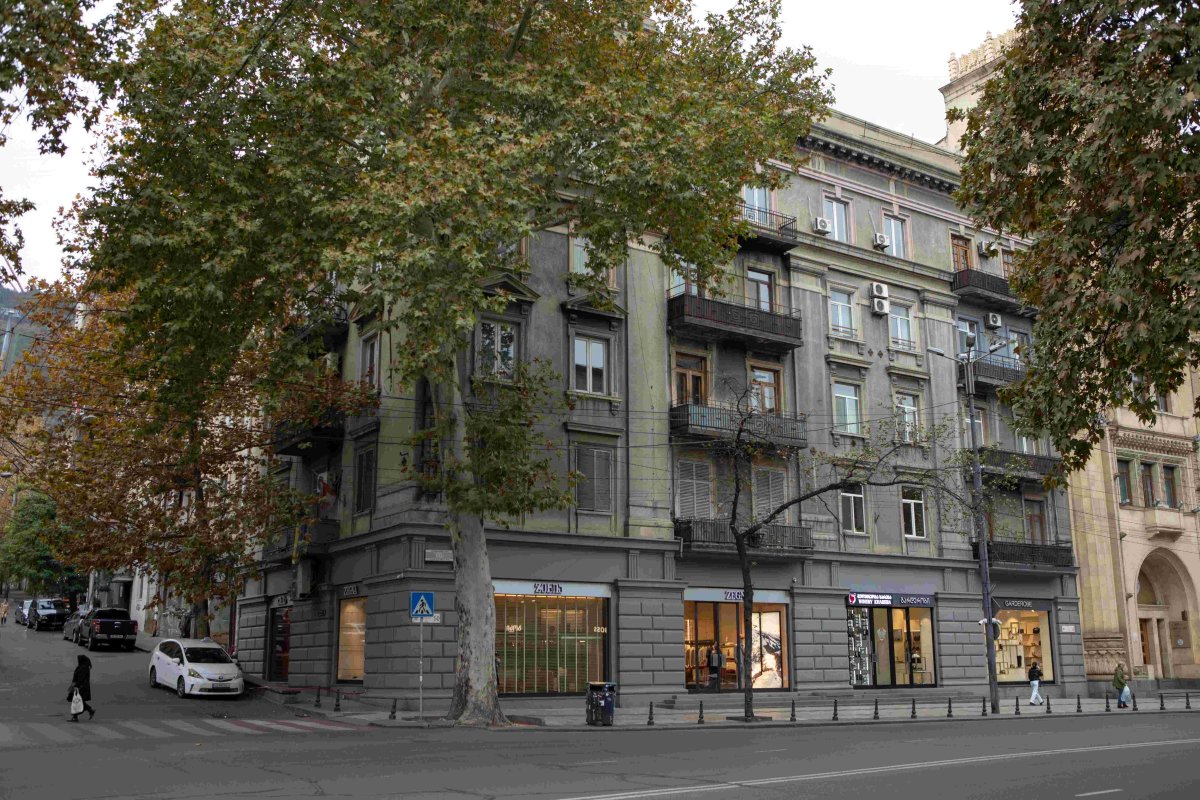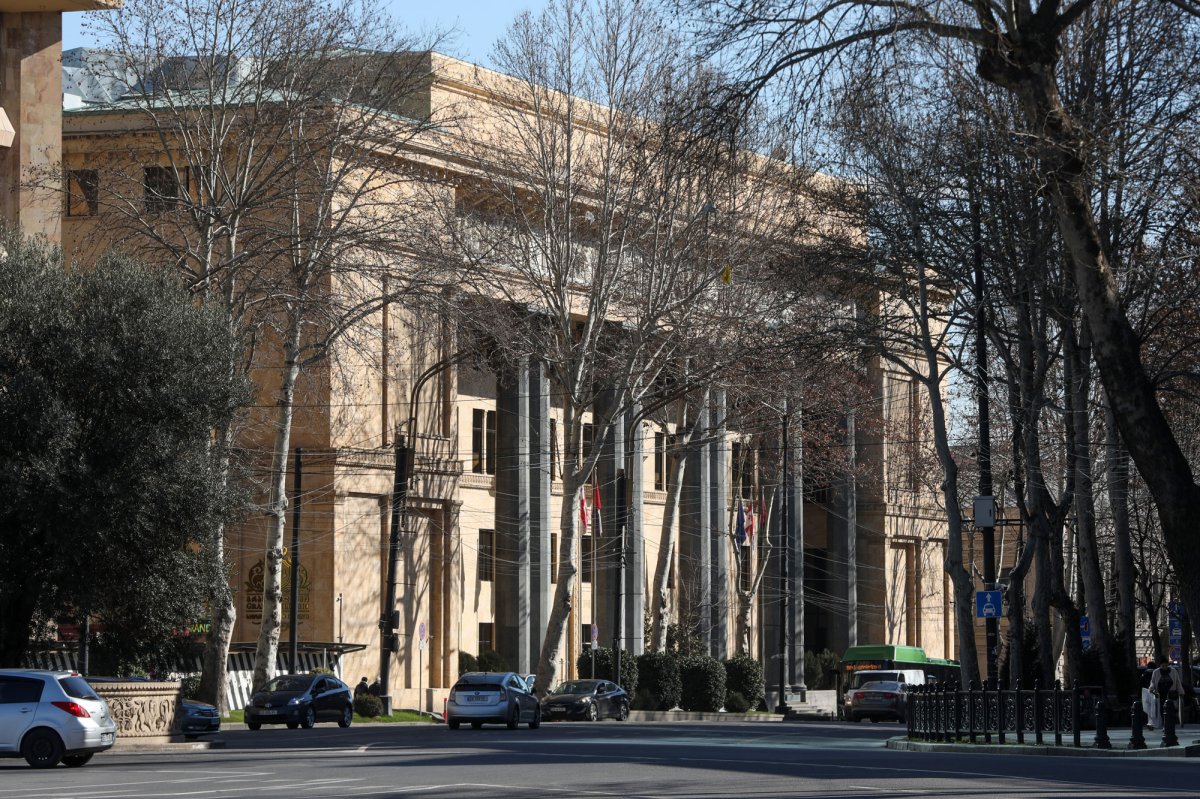
Information in details
The building of the Supreme Council of the USSR, the current parliament, at 8 Rustaveli Ave., is an important building of Soviet architecture, distinguished by its scale and pompous architecture, which is characteristic of the state-purpose buildings of the Soviet period. Before, the place of the parliament building there stood the so-called military temple "Soboro", which was built in 1865-1866 to celebrate the conquest of the Caucasus by Tsarist Russia. After Sovietization, the cathedral was demolished, and in its place, the construction of the government house started gradually from 1938, and lasted until 1965.
The architectural complex covers a wide quarter from Shota Rustaveli Avenue to Mtatsminda slopes and consists of two buildings. The upper building was built in 1938 (Arch. V. Kokorin, with the participation of G. Lezhava). The building faced the inner courtyard from three sides, the center of which was occupied by the ceremonial staircase. The Government House was one of the first buildings in the Soviet Union, in which lightweight reinforced concrete was intensively used. Second, the building by Rustaveli Avenue was built in 1953 (with the participation of architects V. Kokorin and G. Lezhava, V. Nasaridze). It covered the old building from the side of the avenue and thus acquired the main importance. Giant arches give monumentality to the main facade on the side of Rustaveli Avenue. Elements of old Georgian architecture are used in the design of both buildings. The buildings are united by an inner courtyard vestibule, which follows the terrain with stairs and fountains. In 1988, a cast-iron group sculptural composition "Labor, Science, Technology" was erected in front of the building (sculptors: V. Topuridze and Sh. Mikatadze), which was demolished in 1989. The Parliament building and the space around it are closely related to the long-standing dramatic history of Georgia's independence. Thus, the graves of cadets who died during the Sovietization of Georgia were buried in the foundation of the building. The tragic events of April 9, 1989, took place in front of the Parliament building, when the Soviet army broke up a peaceful rally here, which ended in casualties. To mark this, a memorial to the victims of April 9 is standing in front of the Parliament.


 თბილისი, Shota Rustaveli Ave N8
თბილისი, Shota Rustaveli Ave N8
 41.6966810, 44.7979767
41.6966810, 44.7979767





